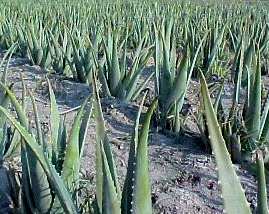
Sábila is Aloe in Spanish; that is, aloe vera. The inner part, often referred to as the “crystal” is the source of aloe vera gel. It is not uncommon to continue to refer to aloe vera as sabila in non-Spanish speaking countries.
The gel from the sabila plant has traditionally been used to treat various skin conditions. It has been used extensively as a drink for supporting recovery from various health conditions from gastric reflux to cancers. Many people drink sabila regularly as a preventative measure to maintain health and for anti-aging. It has also been used for hair growth and as a conditioner. Some people swish with aloe vera gel for slowing gum diseases and healing dry socket. The aloe vera gel from this special plant has probably been used for treating more health conditions than any other botanical.
The outer leaf of the plant also contains a phytochemical called aloin that has been used largely as a laxative. The use of aloin as a laxative is not as common as it used to be since there are many new dose regulated drug laxatives available on the market. Difficulties in determining the proper amount of aloin from the aloe leaf have often led to over treating constipation causing sometimes severe discomfort and cramping. Because of this, the outer leaf of the plant is rarely used for medicinal purposes.
Growing Sabila
Growing sabila is relatively easy in warm climates. It grows quite well with even limited watering. Sabila is a succulent plant. That is, the leaves contain large amounts of water. In drought conditions, the plant survives from the large amounts of water in the leaves and can even survive being out of the ground for a couple weeks before being replanted.
Sabila also multiplies quickly. Little aloe leaves can be seen shooting out of the ground around the aloe plant. When they are just a few inches tall, they can easily be pulled from the ground and transplanted. It is good to pull the new shoots out of the ground and move them away from the mother plant. This allows the leaves of the mother plant to grow rather large. Keeping the babies next to the mother plant drains the mother and hinders the growth of the leaves.
Harvesting Leaves
When the mother sabila leaves grow to more than 2 feet in length and are at least 5 years old, they are ready for harvesting. Older plants tend to have much better nutritional profiles than young aloe vera plants. They also yield much larger quantities of the precious aloe vera gel. Typically, 3 leaves are harvested at a time by tugging gently at the base of the leaf and cutting with a sharp blade, if necessary, just outside of the plant stem.
Eventually, after harvesting many leaves from the same plant, the new plant base can be several inches above ground. It is appropriate to lower the base in the ground. This can be done by pulling the base from the ground and cutting off the excess root system before replanting. In the proper climate, the aloe vera plant is quite forgiving and will soon continue to grow and again sprout new pups around the plant.
You don’t have to “grow your own” to enjoy the benefits. At Haley Nutrition, we do the farming for you and ship the minimally processed gel to you fresh frozen from our warehouse. Order yours today.
-
 4 Gallon Buckets Frozen Pallets$2,421.00 – $6,778.80
4 Gallon Buckets Frozen Pallets$2,421.00 – $6,778.80 -
 Aloe #1® Aloe Vera Gel Health Drink 58 oz. each Frozen$110.00 – $374.00
Aloe #1® Aloe Vera Gel Health Drink 58 oz. each Frozen$110.00 – $374.00 -
 Aloe #1 Aloe Vera Gel Health Drink Bucket 4 Gallons$278.00 – $308.00
Aloe #1 Aloe Vera Gel Health Drink Bucket 4 Gallons$278.00 – $308.00



